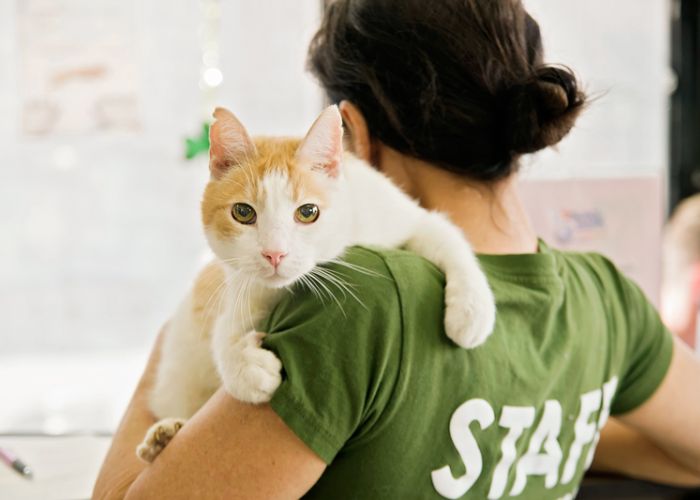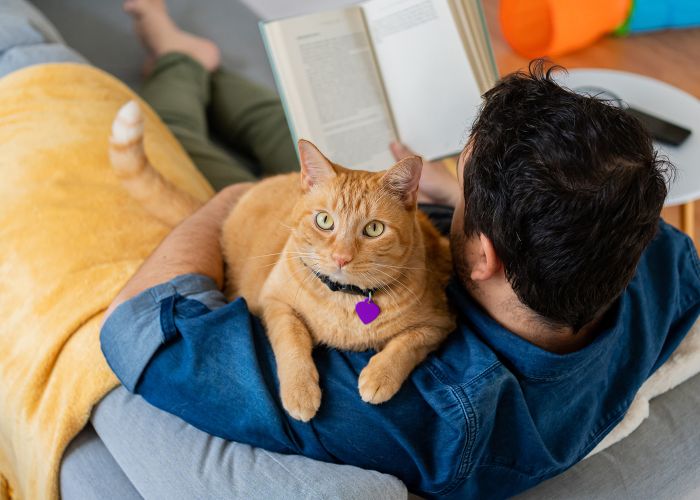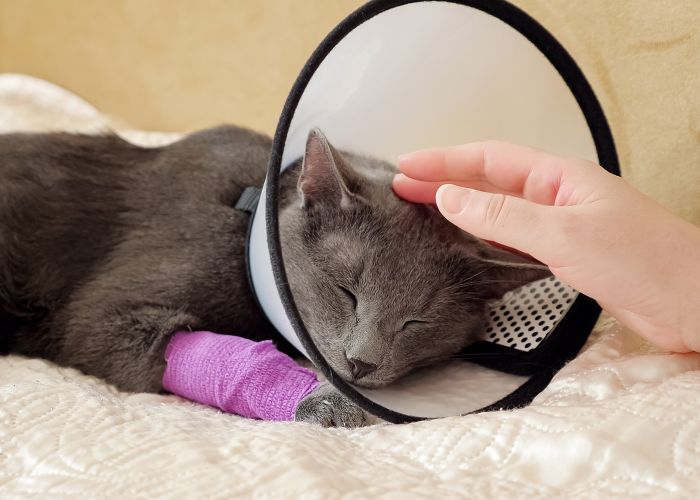Humans of Animal Advocacy: Garrett Parsons
As a service director and pet support supervisor at the Found House Interfaith Housing Network, Parsons helps people without homes keep their pets
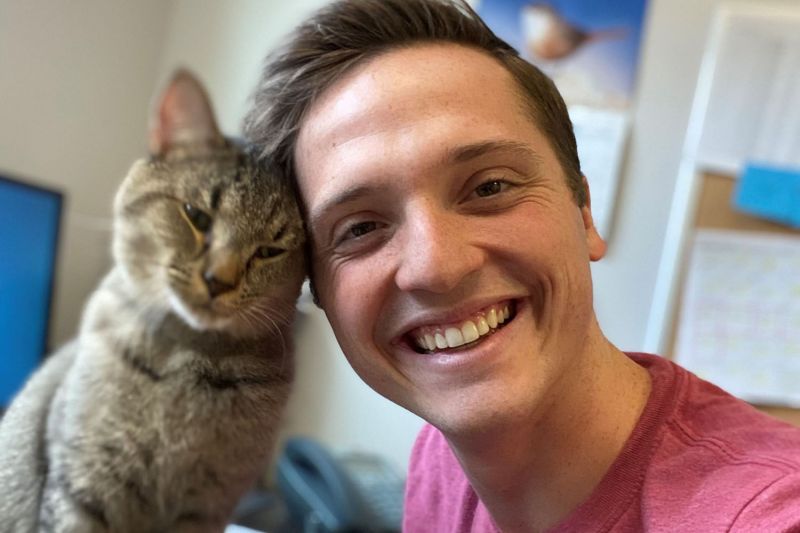
Garrett Parsons works at the intersection of human and animal welfare. As a service director and pet support supervisor at a Cincinnati homeless shelter, he helps ensure that people who lose their homes don’t also lose their pets—keeping families together during hard times.
It’s the kind of role he’s always wanted: He’s a social worker and long-time animal lover, with equal compassion for both people and pets. And now that he’s seen how much helping people can help animals, he wants more communities to prioritize this type of crossover advocacy.
“I want the gap between animal welfare and human welfare to shrink,” Parsons says, “allowing pet owners to feel empowered to care for their animals and not have to surrender them due to circumstances like homelessness or poverty.”
In this edited interview, Parsons talks about the successes and challenges of his work.
How did you find your way to this career?
When I was in high school, I realized how much mistreatment animals experience in the world. I was determined to make a positive difference in animals’ lives. I also wanted to work with people and make a difference; I just wasn’t sure how to do it. I wound up getting a bachelor’s degree in social work, and I interned at the Found House Interfaith Housing Network, I worked part-time with their pet support program after graduating, and then became their full-time pet support coordinator. Eventually, I also became a service director.
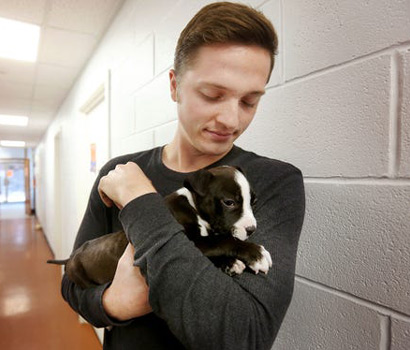
Tell me about the pet support program.
FHIHN works with families experiencing homelessness in Cincinnati. Our main program is emergency shelter for families. We also have programs for families who have been homeless in the past and need additional support, or who are at risk of becoming homeless again. The pet program helps families stay together with their pets.
We partner with congregations of all faiths to house our families in their communal spaces and provide meals for them, and we operate a center where we house and care for their pets. Families can spend the day at our center with their pets before they go back to a congregation for the night.
I intake animals into the program and act as a case manager for the families to help them get assistance with housing, vet care or whatever else they may need. We have relationships with veterinarians and spay/neuter clinics in the area. We also train volunteers to care for the animals onsite and recruit fosters to increase our capacity.
Has the program been successful?
When I started, the program only served a handful of animals. Five years later, we’re helping hundreds of animals every year. We’re reuniting pets with their people almost weekly.
What’s your favorite part of your work?
Seeing animals reunited with their people—seeing the emotion on both sides. Sometimes the people are in tears, sometimes they don’t know what to say, sometimes all they can say is “thank you.” Their reactions make the work worth doing.
When I started, the program only served a handful of animals. Five years later, we’re helping hundreds of animals every year. We’re reuniting pets with their people almost weekly.
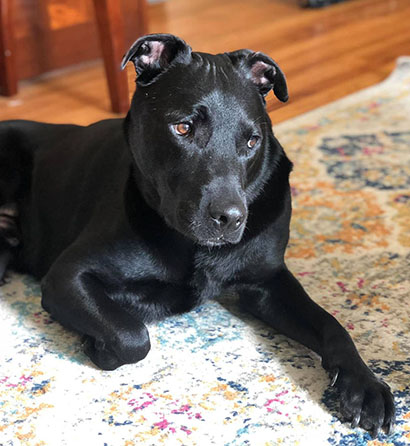
Can you tell me about one of those families?
Cash is a black Lab mix. I met him in 2016 when he was 6 months old, along with his owner, Cleve. Cleve was an older man who had lost his housing. He was living in his Jeep with his dog and was able to get into a homeless shelter. That’s when we took Cash into our care. He was one of the first dogs we brought into our program. Cash and Cleve were completely bonded, so we cared for Cash until Cleve found a place to live.
A couple of years later, I got a call from Cleve’s girlfriend. She said Cleve had passed away and that she had adopted Cash. She was also living in poverty and eventually became homeless herself, so Cash came back into our program. This time we found a foster for him. It took several months for the new owner to get back on her feet, but she did. Since then, our program has continued to be a resource for the dog, the owner and the entire family.
Cash is 4 or 5 now. Seeing him grow up, seeing that we can be a resource for him and his family and knowing that the family is still together today—this is what I think about on the days when it’s difficult.
What’s the hardest part of this work?
One of the hardest parts for me is finding the right balance between work and the rest of my life. I want a balance that will prevent burnout and allow me to work in the field my entire career. I see so much pain and trauma in animals and people. That can be taxing. My education as a social worker has helped me define my own set of ethics and boundaries and work on how to take care of myself.
Another hard part is working in this intersection of human and animal welfare. It sometimes feels like I’m working uphill in two very different areas. In human services, I see agencies that are not pet-inclusive, and I try to work with them on why that is. In animal welfare, while the landscape is certainly changing in the right direction, it’s challenging to work with rescues that think people living in poverty shouldn’t have a pet. They believe that because someone is homeless, that person is unable to care for an animal and shouldn’t have one.
In what direction would you like to see the field move?
At the same time, it can be gratifying when the work we’re doing seems to change people’s minds. I’m trying to bridge the gap.
One of the great things about animal welfare is it seems like everyone is always trying to think of more innovative ways to help more animals. The field is going in the right direction. I would love to see more shelters and rescues employ social workers and attend trainings offered by social service agencies to work with underserved populations more efficiently. I’d like to see human and animal welfare agencies bridge that gap and form more coalitions in communities.



